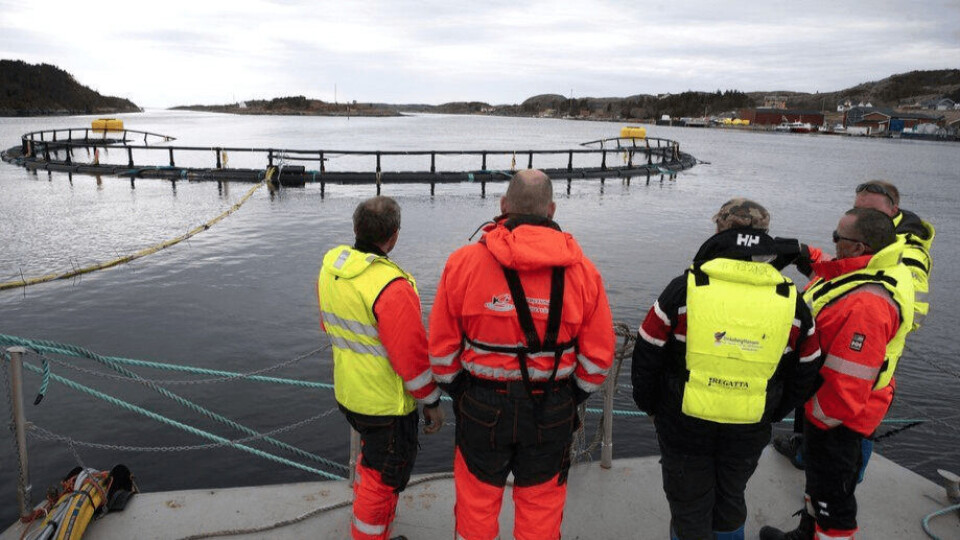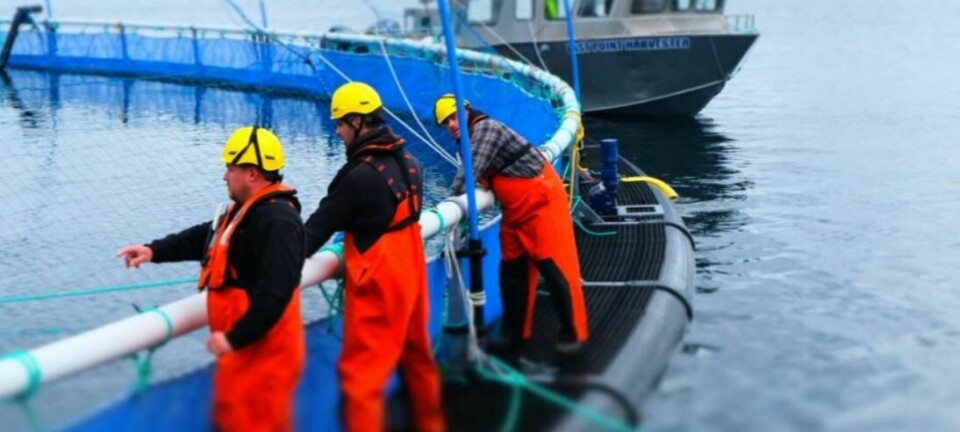
Promising results from Atlantis Subsea cage trials
Atlantis Subsea Farming has given an update on the status of the first fish in its experimental submersible pen, which is being trialled in Norway.
The cage is a collaboration between aquaculture equipment supplier AKVA group, fish farmer SinkabergHansen and cage net maker Egersund Net (now part of AKVA). Fish are kept at a depth of 25-40 metres in the pen where the salmon have access to air via an underwater air dome.
In an update on the AKVA website, Atlantis Subsea Farming general manager Trude Olafsen said the first salmon had gone into the cage in May.

Transferable concept
“Now the fish behaviour and growth will tell us whether the concept provides a productive and healthy production environment or not. If the project succeeds with salmon, the concept is easily transferable to other species,” wrote Olafsen.
“We have faced a few challenges during the project. One of them is to try to make the underwater air dome stable within what I would call an ‘unstable’ system. The development licence allows us to test the technology on actual biomass for three generations – and this is essential for the project.”
Olafsen wrote that the transfer of the fish was a well-planned manoeuvre.
30-minute sinking
“The fish were deloused with a mechanical method three weeks before transfer. Cameras and remotely operated vehicles, as well as the sensors linked with the infrastructure, provided valuable information while submerging Atlantis down to 25-30 metres below the surface.
“Submerging the pen took about 30 minutes. The fish were a little uncomfortable in the middle of the process, but they calmed down and picked up a regular swimming pattern a few minutes after the pen had stabilised. The fish started to show interest in the feed the next day.
“The results we have seen so far are promising. Daily monitoring shows normal swimming speed, which indicates that the fish fills its swim bladder in the air dome as planned. Feeding rate and feeding behaviour are healthy, and there has hardly been any mortality.
“Through six cameras covering all the depths in the cage, highly qualified experts from SinkabergHansen observe the fish every day. So far, they have seen nothing but normal activity and behaviour.”
Access to air
Olafsen said the first version of the submersible pen is now product-certified for the test site.
“Submersible pens may in principle be moored with regular frame moorings, and the circumference of the pen is 160m,” she explained. “The plastic pen (collar) is filled with water before being submerged and then filled with air when the pen is raised. The AKVAconnect control system enables remote control of the entire process from a barge or onshore, with dedicated software programmed for this system.
“The dome connected to the middle of the net-roof grants access to air for the fish. The waterborne feeding system, lights and cameras are also connected to the dome.
“AKVA group has gained experience with waterborne feeding in the Atlantis project. This knowledge is indeed valuable to us when we now step up the development of a waterborne feeding system in combination with flexible feeding. In Atlantis, the waterborne feeding makes it possible to feed with a safe and steady spreading pattern at 25-30 meters depth.
“All in all, we consider the investments legitimate to the operational benefits we expect Atlantis to provide.”






















































